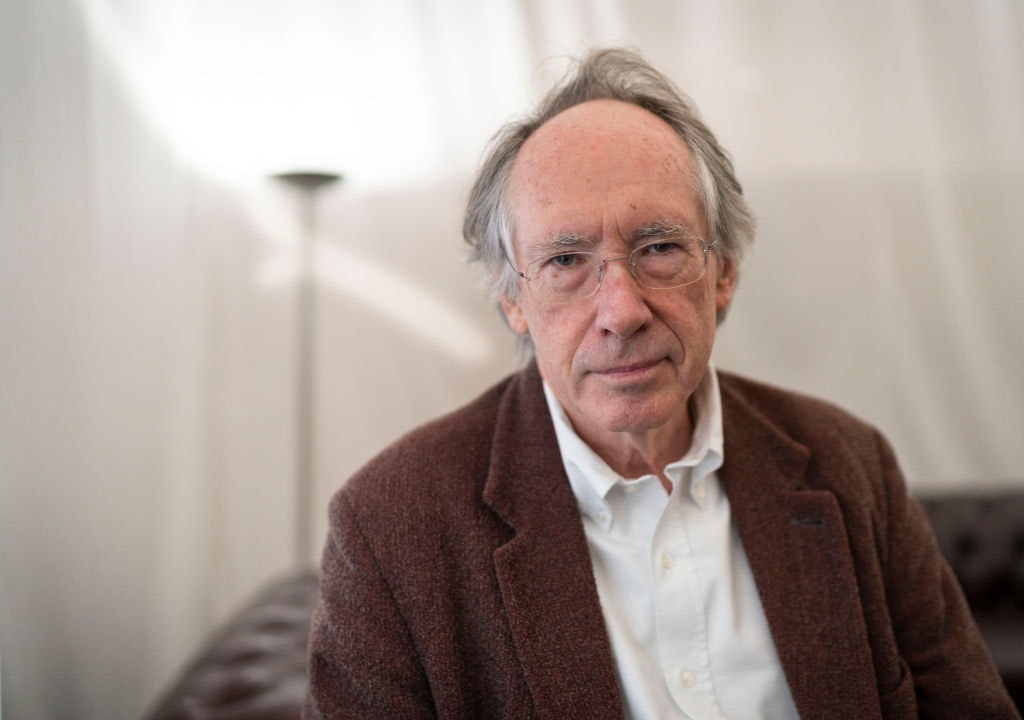This article is taken from the February 2023 issue of The Critic. To get the full magazine why not subscribe? Right now we’re offering five issues for just £10.
What is the point of art history? Today, like the clergy in the 19th century, it seems fit only for heirs and spares and to while away the time until you snag a Royal. This wasn’t always the case, of course. It was only fifty years ago that John Berger’s Ways of Seeing smashed onto screens like a fist through canvas. A few years before that Kenneth Clark bestrode the glories of western civilisation, a colossus in herringbone tweed. Art history was then a serious business, taken seriously. No longer.

It’s a surprise then to find it the subject of two debut novels, Michael Mallon’s The Disciple and James Cahill’s Tiepolo Blue. Both feature protagonists who are, or aspire to be, art academics. Both take place at a time of crux for the discipline: the late Eighties and early Nineties when professionalism lifted it from the hands of gentleman dilettantes, the clamour for “accessibility” began to grow and the thorny tangle of trendy approaches climbed ever higher.
The Disciple is the more conventional of the two. It describes the decades-long relationship between a young American art history student, John Forde, with a man 50 years his senior, Sir Christopher Noble-Nolan. He is a renowned British scholar of the can’t-boil-an-egg level of good breeding. Forde’s intellectual infatuation leads to (unrequited) romantic devotion until, with the passing years, it curdles into resentment at his wasted years and talent. It’s a promising premise, and a neat inversion of the trope of a younger woman seduced by an older man, as in Lynn Barber’s An Education.
The difficulty lies in the execution. John is a gauche and unappealing character, forever pacing out his frustrated potential. Mallon’s prose is treacly, slouching too frequently into Dan Brown-esque info dumps. “Spring is the most celebrated season in Florence,” he writes, “for then it is that sweet-blossoming shrubs and fruit-bearing trees transform this art-drenched urban centre into a vision of arcadia.”
Despite the apparent licence of fiction, there’s a reticence to the novel
This is a pity, as submerged within The Disciple is a decent bildungsroman. John’s ambition, fierce but unfocused, and clotted by self-sabotage, will be familiar to many. The book’s strongest section is its final emotionally taut pages as John counts the costs of caring for Sir Christopher. John, like many carers, buries himself. Caring becomes identity, not simply an act.
These moments suggest The Disciple would have been a forceful memoir. In fact, Mallon has written that the novel is an obscured version of his own affair with John Pope-Hennessy, the director of the British Museum. Yet despite the apparent licence of fiction, there’s a reticence to the novel, a desire to spare distinguished blushes. The first time John and Sir Christopher have sex, for instance, it is dealt with tip-toeing tactfulness: “Sir Christopher reached out to touch John’s hand. That day they read no further in the manuscript.” A more frank account would be all the more powerful.

There is no shortage of candour in Cahill’s Tiepolo Blue. A mid-life coming of age story, it follows an art historian, Don Lamb, who is expelled from Peterhouse after denouncing its jazzy new art installation. He’s put out to pasture at a small museum in south London where he falls into Soho’s gay scene and mixes with the Young British Art movement constellating around Goldsmith’s. As his professional life crumbles, his identity as a gay man clarifies, sloughing off roles and responsibilities with vertiginous abandon. It’s a coming-out novel in the truest sense. Cahill has no squeamishness about Don’s self-discovery: his loss of virginity in a Soho sauna is described with muscular, slippery immediacy.
Most giddying are the passages that evoke the slow-mo slide of Don’s professional collapse. There is a nightmarish compulsion to Don’s drunken speech attacking a colleague: “He bows to signal the end of his oration. No one speaks. Then, gradually, as if applause has been passed over or forgotten, conversations break out furtively along the table.” The drama of Don’s descent is that of small, everyday slights and mistakes — indiscreet words, tattle at high table — but, in Cahill’s hands, they become excruciatingly hideous. I shivered with awful delight at the episode when Don discovers internet porn — on a dial-up modem, in the director’s study, overlooked by a party of hooting school girls.
In fact, Cahill has a lot of fun sending up the era and the pretensions of art history. Don is a classical aesthete of the Sir Christopher Noble-Nolan school: art is beauty, beauty art. He’s writing a book on the particular blue of Tiepolo’s skies, and he has no truck with “axioms” and “continental cant”. These debates, of course, have only grown more clamorous since the early Nineties when Tiepolo Blue is set. Cahill doesn’t pick a side. Instead, he stages a lively knocking shop for conflicting ideas whilst — wisely, given our censorious climate — distancing them in time and space.
Yet in the end, I suspect Cahill is on the side of the angels. That is, he’s up there in “Tiepolo’s towering, populated skies”. What’s the point of art history? That, we might suggest, is the point — to be up in the heavens, where “the blue air is fresco-faint”, sunk in matchless beauty.
Enjoying The Critic online? It's even better in print
Try five issues of Britain’s newest magazine for £10
Subscribe



